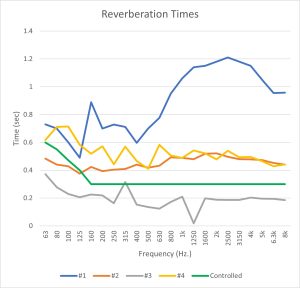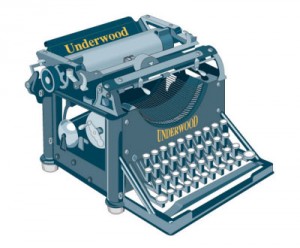
One of the things that's been in the news lately is the idea of "Death Spiral" pricing, where a company (or an industry) is, for whatever reason, forced to charge too much for its products, which causes sales to drop off, which makes the company, in order to survive, raise the prices on its remaining sales, which causes volume to drop even further, forcing the company to raise its prices again, causing still another decline in sales, and around and around again, until there are no sales at all and no company or no industry, either.
The discussions of that issue that are currently in the news refer to different industry, but I'm afraid that the concept of a pricing death-spiral may also apply to our own High End audio industry altogether too well.
I don't know of anyone in the High end community who hasn't at some time wondered about the ever-increasing prices of our toys and goodies. Back in 1963, when Marantz came out with their Model 10 FM tuner for the then-princely price of (if I recall it correctly) $600, we were all shocked, and many of us (I and my HiFi Crazy pals) found it hard to believe that, regardless of how good it might be, even one of them would ever be sold. The same thing happened in the 1970s, when the Grado Signature phono cartridge hit $1000, and in the 1990s, when the Goldmund Reference turntable ($30,000) and the Goldmund Apologue speaker system ($80,000) appeared to set new and jaw-dropping standards for sheer brute expense.
Even after I ceased being a reviewer for one of the magazines and, in 1991, actively entered the audio industry as the designer and manufacturer of XLO cables, I still sometimes found myself shocked by the prices that some people charged for their top-of-the-line gear. And when, some years later, Kimber Kable shattered all previous pricing standards by announcing its Black Pearl speaker cable at $15,000 for an 8 foot pair, I was simply amazed. Not by Ray Kimber charging that much—I knew Ray well enough, even then, to know that if that was what he was charging, it was a fair price—but by the idea that any cable product could be accepted by the market at such a lofty figure.
Well, as we have all by now seen, my amazement was premature: I understand that one company now either has or is about to announce a speaker cable at $50,000; violently expensive phono cartridges and turntables seem almost to be the norm; and the Goldmund Apologue—which had been shocking at $80,000—is now available (Hurry! Quantities are limited!) as a "25th Anniversary Edition" for the genuinely mind-boggling sum of 50K!
Yup! A cool half million dollars for a pair of speakers! Certainly impressive, but is it sustainable? Can our hobby and our industry possibly survive that kind of unrestrained price inflation? Is there really no limit to what people will pay to buy the things they want?
In an earlier article for another publication, I wrote that the high end is like a ramjet—a simple jet engine that "the faster it goes, the faster it goes", until it eventually outruns its own exhaust and blows itself out. I still see that as being true and, frankly, it's what has me worried about the very real possibility of a High End "death spiral."
The problem is really one of basic economics: As the price of any good goes up, the quantity taken goes down. Always. To illustrate this, think of anything at all that you buy: How about gasoline? Now that the price is over three dollars a gallon, don't you do less non-essential driving, and thus use and have to buy less gas than you did just a few years ago, when the price per gallon was only half as much?
Part of the reason for this is that when we recognize inflated prices, we try not to spend them just because we don't like to feel "ripped off." Another is that if our supply of money, whether from wealth already in hand or as part of an ongoing income flow isn't increasing at the same rate as the prices are, higher prices for anything will take a bigger part of what we have, and we compensate with greater prudence or restraint before we make any purchase at all.
Still another reason has to do with price theory—the real answer to the question of why prices are what they are: Economists know that, despite what most people seem to think, it's NOT just "Supply and Demand" that determine the price of a good. There's a third factor which is just as important but much less well-known to the average consumer, and that's "The Availability of Substitutes."
To illustrate this, imagine that you are a commodities investor, and that, by shrewd manipulation or brilliant trading, you have managed to corner all of the steel in the world. You now have an absolute monopoly on that supremely important industrial material. You control the supply and you know there's a demand, so now you can charge whatever you want for it, right? Wrong! You may be able to raise the price a little bit, but, remember that there are always other things out there that people can use instead of your steel. Aluminum, for example, or some other metal—titanium, perhaps, or magnesium—or plastic or even wood. The people who use steel now use it because it's stronger or cheaper or easier to work with, or more durable, or has some advantage in making their own products, but there are certainly substitute materials they could use instead, and the higher you raise your price for steel, the more likely it is that the customers you thought you had "locked-in" will turn to something else. If you keep on raising your price, at some point, all of them will have switched-over to alternative materials, and you'll find yourself unable to sell any steel at all.
That's one way of looking at the availability of substitutes as a determinant of price. Another is to consider it from the buyer's point of view: The higher the price of any good is, the more other goods come to be competing against that good for the buyer's dollar, and the less likely it therefore becomes that the buyer will spend that dollar for any one particular product. That's the issue that, if things continue going as they have been, may eventually cause the High End to put itself out of business.
Certainly, better products can cost more to manufacture, and certainly, if they do, a manufacturer will have to raise their price to cover his increased cost of production. Certainly, also, in order to justify that higher selling price, the products may require better "fit and finish" or better cosmetics to make them look and "feel" as expensive as they have now become. Achieving that, however, can and often does kick off another round of cost and price increases, and around and around, and around, again, until we wind-up with viciously expensive products that because of their very high price, can only be sold in very small quantity, which requires, just for the manufacturer's survival, another round of price increases.
It used to be that a top-of-the-line, state-of-the-art system could be bought for the price of a nice car. For more than just the last few years, though, that may no longer be true. If you need a pair of Goldmund Apologues for your listening room, they're going to cost you more than a new 2013 Bentley Continental GT ($178,000) plus a new 2013 Lamborghini Gallardo ($182,000) PLUS a new 2014 Maserati Quattroporte ($102,000) plus (for the three cars to run on) ten thousands gallons of gasoline at $3.75 per gallon!
Certainly the Goldmund example is absurd, but the new Apologue speakers are just an extreme case of a trend that is already well in process and that, if it continues could wind-up killing our industry. The more expensive High End audio gets, the more it does compete with a new house or a new car or a college education, and the number of people who will choose the audio instead of the alternative doesn't seem to be growing.
Even if the "death spiral" hasn't already started, can it be far off?





































